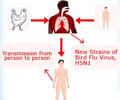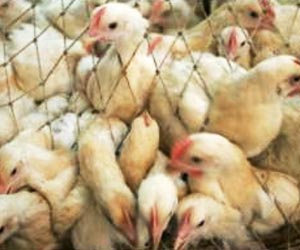A new study from MIT led by an Indian origin scientist has identified influenza viruses circulating in pigs and birds that could pose a risk to humans.

The MIT study revealed that there are many strains of H3N2 circulating in birds and pigs that are genetically similar to the 1968 strain and have the potential to generate a pandemic if they leap to humans.
The researchers, led by Ram Sasisekharan, the Alfred H. Caspary Professor of Biological Engineering at MIT, also found that current flu vaccines might not offer protection against these strains.
"There are indeed examples of H3N2 that we need to be concerned about. From a pandemic-preparedness point of view, we should potentially start including some of these H3 strains as part of influenza vaccines," said Sasisekharan, who is also a member of MIT's Koch Institute for Integrative Cancer Research.
The study also offers the World Health Organization and public-health agencies' insight into viral strains that should raise red flags if detected.
Sasisekharan and his colleagues wanted to determine the risk of H3N2 strains re-emerging in humans, whose immune systems would no longer recognize the more dangerous forms of H3N2. This type of event has a recent precedent: In 2009, a strain of H1N1 emerged that was very similar to the virus that caused a 1918 pandemic that killed 50 million to 100 million people.
In the new study, the researchers compared the 1968 H3N2 strain and about 1,100 H3 strains now circulating in pigs and birds, focusing on the gene that codes for the viral hemagglutinin (HA) protein.
The researchers also took into account the patterns of attachment of the HA protein to sugar molecules called glycans. The virus' ability to attach to glycan receptors found on human respiratory-tract cells is key to infecting humans.
Seeking viruses with an antigenic index of at least 49 percent and glycan-attachment patterns identical to those of the 1968 virus, the research team identified 581 H3 viruses isolated since 2000 that could potentially cause a pandemic. Of these, 549 came from birds and 32 from pigs.
The researchers then exposed some of these strains to antibodies provoked by the current H3 seasonal-flu vaccines. As they predicted, these antibodies were unable to recognize or attack these H3 strains. Of the 581 HA sequences, six swine strains already contain the standard HA mutations necessary for human adaptation, and are thus capable of entering the human population either directly or via genetic reassortment, Sasisekharan said.
"One of the amazing things about the influenza virus is its ability to grab genes from different pools. There could be viral genes that mix among pigs, or between birds and pigs," he noted.
Sasisekharan and colleagues are now doing a similar genetic study of H5 influenza strains.
The study appeared in the journal Scientific Reports.
Source-ANI
 MEDINDIA
MEDINDIA




 Email
Email




